ITTN’s Neil Steedman continues to discover the Wonders of Bhutan with National Geographic Journeys with G Adventures and Turkish Airlines.
Having explored Paro and the Punakha Valley, on the following three days we travelled on through the Phobjikha, Khewa and Gangtey Valleys to reach Bhutan’s capital city, Thimphu.
After arriving in Bhutan from Nepal, I was surprised at how good the road network is generally, compared with Nepal’s earthquake-damaged roads. However, several sections of the roads through the mountains are being upgraded (by various contracting firms from India) and provide what our fun-loving guide, Tashi Tobgay, calls “a free massage”!
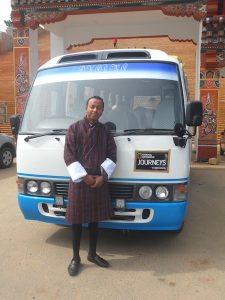
Also, compared to those in Nepal, Bhutanese drivers are generally careful and polite, including our driver, Dharma, whose assured hands on the wheel and safe driving offered much reassurance as our bus wound its way around sharp bends high up on (very!) steep hillsides. This meant that we could focus our eyes and our minds on the wonderful scenery of the Himalayas, rice-terraced hillsides, prayer wheels powered by descending streams, distant monasteries and, of course, more chillies drying on roof tops.

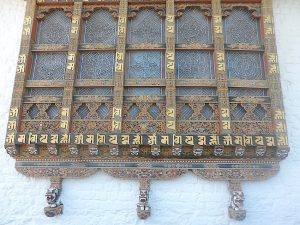
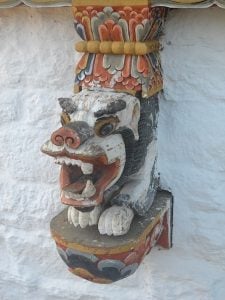
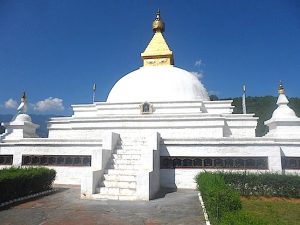
Before leaving Punakha Valley, however, we first visited Sangchen Dorji Lhundrup Choeling Buddhist College for Nuns in Wolakha, which opened as a nunnery in 2008. This was upgraded and inaugurated as a Buddhist College in 2015, becoming the first institute to enable nuns to pursue higher Buddhist studies up to the master’s level.
By the way, wi-fi is not available in some parts of Bhutan and, while technically available in other hotels, when your bus load of 17 people arrives and everyone goes online at the same time it can be v…e…r…y slow, often to the point of uselessness. (I took this as a lesson to stop attempting daily reports and to focus on the experiences of a lifetime that Bhutan offers.)
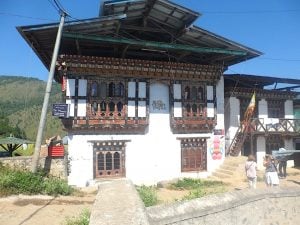

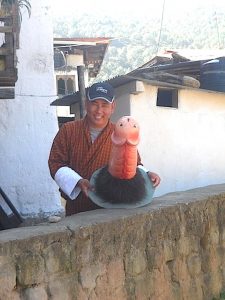
Penises are a common sight in Bhutan – and yes, you read that right! They decorate houses, either as large wooden sculptures or as wall paintings, in order to ward off evil spirits and ‘malicious gossip’ – so in the village of Sopsokha it was no surprise to find a Phallus Handicraft shop.
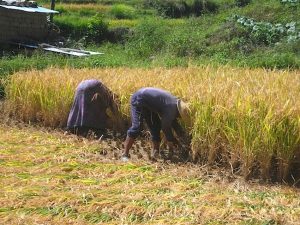
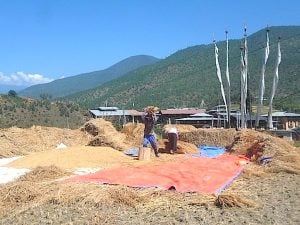
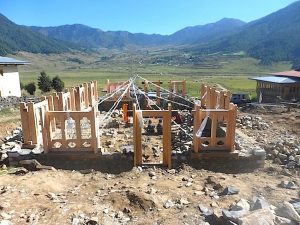
Villagers were hard at work harvesting and threshing rice and building houses as we hiked up to Chime Lhakhang, the penis-focused monastery built in 1499 and dedicated to Bhutan’s ‘Divine Madman’, Lam Drukpa Kuenley (1455-1570). An information panel explains: “Lam Drukpa Kuenley was a social critic who taunted the hypocrisy of the established orders, including the monastic order. Thus the use of his phallus as a ‘flaming thunderbolt’ weapon symbolises the discomfort that society experiences when facing the truth.” Couples visit Chime Lhakhang to receive blessings in anticipation of becoming pregnant – one young couple in our group undertook the proceedings, so I await good news!
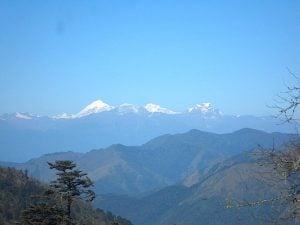
An important visitor attraction in the Phobjikha Valley is the Black-Necked Crane Visitor Centre. Unfortunately we were two or three weeks too early to see these majestic birds that make an incredible migration over the Himalayas from Tibet each November to winter here until March. A record 555 cranes came last year and at least we got to see one that was injured and being cared for at the centre before being released. They have even hung a mirror in its cage so that it thinks it is not alone.
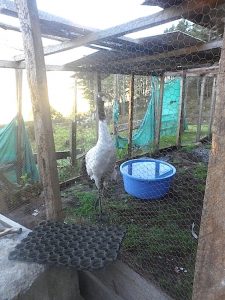
We also visited a primary school class in Beta School where the children sang songs for us and showed us their text books – which were all in English.
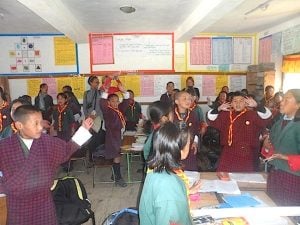
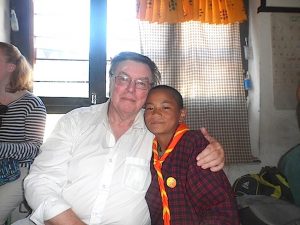
As we travelled to the Gangtey Valley we visited the village of Khewa and en route saw a yak, monkeys and a wild boar – but failed to spot any Himalayan black bears that were probably also about.
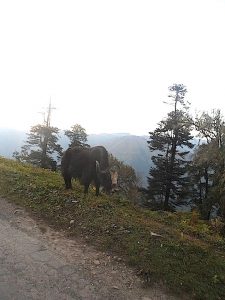
We then walked to the monastery of Gangtey Goempa, known to hold the most sacred relics in Bhutan – it is a great shame that photography is not permitted inside any monasteries or nunneries, because the interiors are stunning (a word I rarely use).
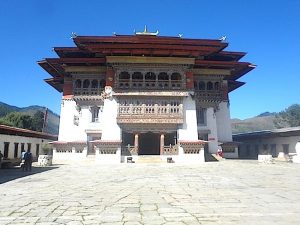
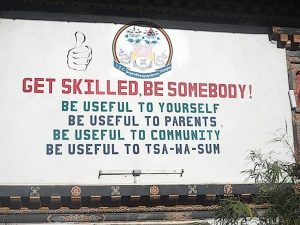
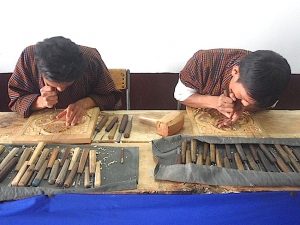
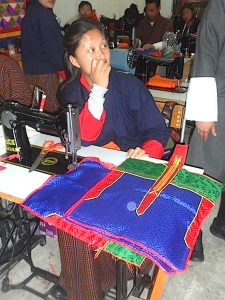

Finally we arrived in the capital, Thimphu, where we visited the National Library and the Institute for Zorig Chusum, an arts and crafts school where students practice traditional arts such as woodworking, painting, ceramics, silversmithing and embroidery.


